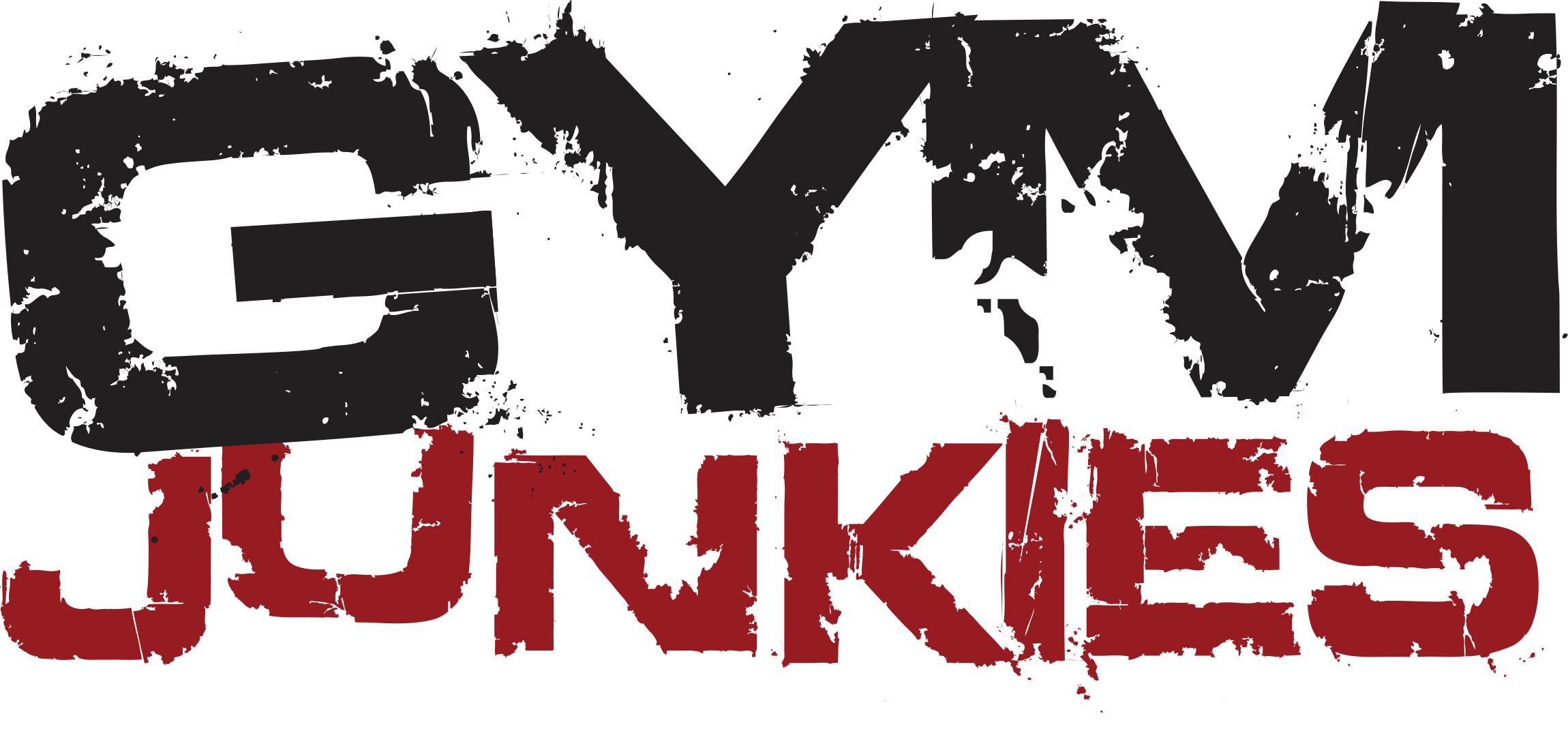Whether you are passionate about neurological (strength) training, or simply want to change it up, it is great for you. Not only is it easy to measure progress in neurological training, but there are many health benefits to it as well.
Of course, everyone loves hypertrophy training and fat loss. Unfortunately many enjoy this not for their health benefits, rather to look a certain way in society. Because it is a fad to be lean and fit. You get praised and admired. We are not saying everyone is motivated by this, but a large number of people. And this can easily be seen on social media.
In this article, we are going to focus on the benefits that matter; your health. Which health benefits being stronger provides, and how the ease of measuring the progress might make you more motivated!
Health Benefits of Strength Training
Did you know that the stronger your legs are, the longer you live? This is actually a fact. Of course, you will not be 200 years old if you have the leg strength of a horse. But, strong legs have shown to correlate with a higher life expectancy.
Moreover, strength training has shown to improve brain function and management of blood sugar levels. Particularly in aging people are the benefits of a stronger body obvious.
A stronger musculature is also correlated with better mood, energy levels and sleep. This becomes more important in a society that sits on their butt and watches their laptop or phone the whole day.
When your energy levels and sleep is not optimal, you are truly only functioning at half-capacity. Basically just like driving a car with missing wheels. Knowing this, should be enough to get you to do some exercise!
Difficulty of Measuring Hypertrophy and Fat Loss Progress
It can be easy to measure strength gains compared to hypertrophy and fat loss. Not only for competitors who are getting ready for a show, but for the average Joe trying to get off his blood pressure pills. They rarely understand the complexity behind building muscle and losing fat.
Truthfully, very few trainers even get it.
They might be able to help you build muscle and lose some fat, because they put you in a caloric deficit. However, more often than not, they would not be able to fully explain the intricacies of it.
For instance the limited amount of information the scale tells us, what biomarkers mean, and so on. Instead, they simply focus on the scale. Which can lead to a lot of unnecessary physical and psychological challenges.
These things are extremely important. Because building muscle and losing fat impacts your whole life. Not only your physical health, but mental health as well.
It Is a Slow-Go
Very often, fat loss and muscle gains happen very slowly. Even when you are doing it 100% correctly, and changing up the stimuli as well as you can. These things take time, and are a slow-go. Sometimes, we are talking about a few grams of fat lost per week.
It could even be one gram of fat lost. You cannot see this, and you cannot truly measure this, unless you have very advanced equipment.
Thus, there are no signs telling you to keep going. That you are doing totally fine, and to keep the course steady. From within, your brain and cells are saying “you are doing perfectly fine, we are feeling good. We are losing weight and gaining muscle as fast as we can, and we cannot do it faster.”
How fast this happens, is so individually different and dependent on your genetics.
So, you do not have a specific way to measure all this progress. And in our fast-paced society, if things do not happen right away, we get impatient. We want results now. We want satisfaction and pleasure right away.
Strength Training Is Easy to Measure
Strength training on the other hand, will show you results much easier. Every single time you get to the gym, you can see an increase in weight, your ability to perform the exercise, and how much control you have.
Even if you just add five pounds or one more pound, it is still progress.
In the same way, if the 5 x 5 of 250 pound bench press is easier this week than last week, it is also progress. You know you are getting better and improving. And you know you are on the right track. It is very simple to measure, and you see results right away.
This is why progress in strength training can keep up with the desire for instant gratification of today’s society. And this can be a great way to motivate yourself to keep crushing it in the gym.
Understanding the Complexity of Bodybuilding
Today, people are so caught up in their body image and how they look. When they actually should be focused on getting in real shape, and knowing themselves. Understanding that gaining muscle and losing fat is a long and complex process. There are so many factors involved.
Often, people will look to someone they find on social media and want to be like them. So they go and look at what they do, what they eat, and expect to look somewhat similar. Not being aware of the truth.
Not only are a lot of these people on steroids, but they have fantastic genetics as well. Yes, genetics matter a lot. Some people can go to the gym 3 times a week, and just throw weights around. Have a poor diet mixed with some protein shakes, and still look like Greek Gods.
These are facts that not many people want to talk about. Especially not the people with these genetics, because they want to sell you their program.
They want your money and attention. Not everyone, but definitely the majority of the fitness industry.
This brings us to the importance of knowing yourself and your body. Accepting that things might take a long time, and that you cannot compare your body to some other person. And accepting that you might look a little bit bigger, but that you are on the right track.
Your body is unique and different from all the billions of people in the world. That is why your training and diet has to be individualized to you.
Real Results Take Time
Furthermore, real results take time in bodybuilding, and pretty much everywhere else in life. For instance, if you are a competitor, you cannot be shredded the whole year. Especially not if you want to gain a good amount of muscle in the off-season.
Let us say your offseason is 8 months. You are going to have to eat a certain amount of calories, however much is necessary for you to be in a surplus. And with that comes a little extra body fat, that is just how it works.
You have to predominantly stay in a caloric surplus for the whole 8 months to truly gain beef. Not yo-yo dieting for 4 months, and gaining for 4 months.
Instant Gratification With Strength Training
Like we said earlier, our society is conditioned to wanting to see results immediately. With strength training, we can actually measure these results much easier. Even if you could only do the same weight this week as last week, but it was easier this week, it is still progress!
Or you did one or two more reps this week compared to last week. This way, it is easy for you to see results, and know that you are on the right track.
This is a type of progression we rarely talk about in the fitness world. Maybe you could feel your quads more this workout than your previous workout. Or, simply be able to pause longer at the bottom of the hack squat.
Therefore, strength training can be a fantastic way for anyone to see results. Whether you are doing a strength lift competition, or you just are a regular gym-goer. Especially in our society, where people want pleasure right away.
It does not mean you should go in and train heavy every single workout, because that will hamper your results. For continuous progress we need to change up the stimuli. But by keeping this in mind, it can help you motivate yourself to smash some weights!
Conclusion
Neurological training, or strength training as it is primarily known as, has many great benefits. Not only are strong legs and a strong musculature correlated with a longer life, but with a better mood, higher energy levels and better sleep as well. Additionally, in strength training we can see results almost instantly. Whether that is adding an extra five pounds to the bar, or simply performing the same lift better. This can be an important factor to motivate you to go smash some weights. Especially in a society that craves instant gratification, and wants to see results immediately.
Thank you for reading our article!
– Terry Asher
Terry Asher
Latest posts by Terry Asher (see all)
- Better Family – Product Review Liquid Daily 2 oz - Dec 16, 2024
- Post-Workout Recovery: The Key to Optimal Performance - Nov 25, 2024
- Pre-Workout Supplements – Everything You Need To Know - Nov 18, 2024















[…] Training volume is a pop topic in our world of fitness. Regardless whether we train for muscle building or fat loss, volume always plays an important role. However, volume is not truly a simple calculation of (sets x reps x weight), which often is said. We are going to cover this in more detail, but our main focus is junk volume. […]
[…] Training volume is a pop topic in our world of fitness. Regardless whether we train for muscle building or fat loss, volume always plays an important role. However, volume is not truly a simple calculation of (sets x reps x weight), which often is said. We are going to cover this in more detail, but our main focus is junk volume. […]
[…] a result of when most individuals start a food plan and coaching plan, they’re very dangerous at fats loss. Which means, there are a number of issues we have […]
[…] that might be an increase in strength, another time it could be an improvement in your recovery between […]
[…] Training Volume is a pop topic in our world of fitness. Regardless of whether we train for muscle building or fat loss, volume always plays an important role. However, volume is not truly a simple calculation of (sets x reps x weight), which is often said. We are going to cover this in more detail, but our main focus is junk volume. […]
[…] plan. The most important thing you can do is to understand the goal of both your nutrition and training plan. That way you can make the best decision for yourself on your fitness journey. Slip-ups and […]
[…] it is not a bad exercise, it is not an exercise that we choose to advocate when programming training plans. This is because we cannot get as much output from our quads as we would like, and it […]
[…] how aggressive you are with the caloric deficit, but also the complexity of what you are doing for training and […]
[…] when most people begin a diet and training plan, they are very bad at fat loss. Meaning, there are several things we need to consider when we […]
[…] that might be an increase in strength, another time it could be an improvement in your recovery between […]
[…] Training volume is a pop topic in our world of fitness. Regardless whether we train for muscle building or fat loss, volume always plays an important role. However, volume is not truly a simple calculation of (sets x reps x weight), which often is said. We are going to cover this in more detail, but our main focus is junk volume. […]
[…] training volume is a pop issue in our world fitness. Whether we’re training for muscle building or fat loss, volume always plays an important role. However, volume is not a simple (sets x reps x weight) calculation, as is often said. We will cover it in more detail, but our main focus is garbage the volume. […]
[…] Training volume is a pop topic in our world of fitness. Regardless whether we train for muscle building or fat loss, volume always plays an important role. However, volume is not truly a simple calculation of (sets x reps x weight), which often is said. We are going to cover this in more detail, but our main focus is junk volume. […]
[…] Source link […]
[…] Training quantity is a pop matter in our world of fitness. Regardless whether or not we practice for muscle constructing or fats loss, quantity all the time performs an essential position. Nonetheless, quantity isn’t really a easy calculation of (units x reps x weight), which regularly is claimed. We’re going to cowl this in additional element, however our fundamental focus is junk volume. […]
This complementary component has a propensity to win back a significant number of prospective clients. How would you go about defending it? Getting this done provides a cool and unusual perspective on the problems at hand. I believe that making use of anything that is authentic and perhaps significant to convey home elevators is the most important factor to take into account.
[…] Source link […]
[…] Source link […]
[…] Source link […]
[…] Source link […]
[…] Training volume is a pop topic in our world of fitness. Regardless whether we train for muscle building or fat loss, volume always plays an important role. However, volume is not truly a simple calculation of (sets x reps x weight), which often is said. We are going to cover this in more detail, but our main focus is junk volume. […]
[…] Training volume is a pop topic in our world of fitness. Regardless whether we train for muscle building or fat loss, volume always plays an important role. However, volume is not truly a simple calculation of (sets x reps x weight), which often is said. We are going to cover this in more detail, but our main focus is junk volume. […]